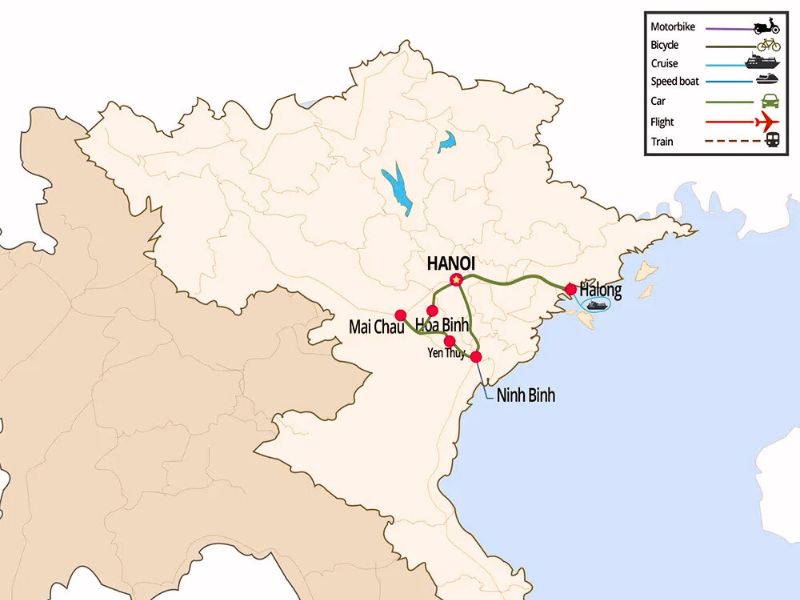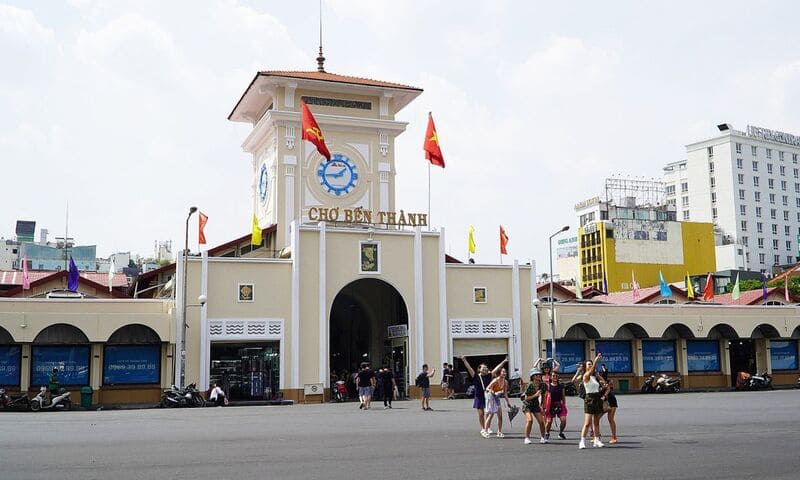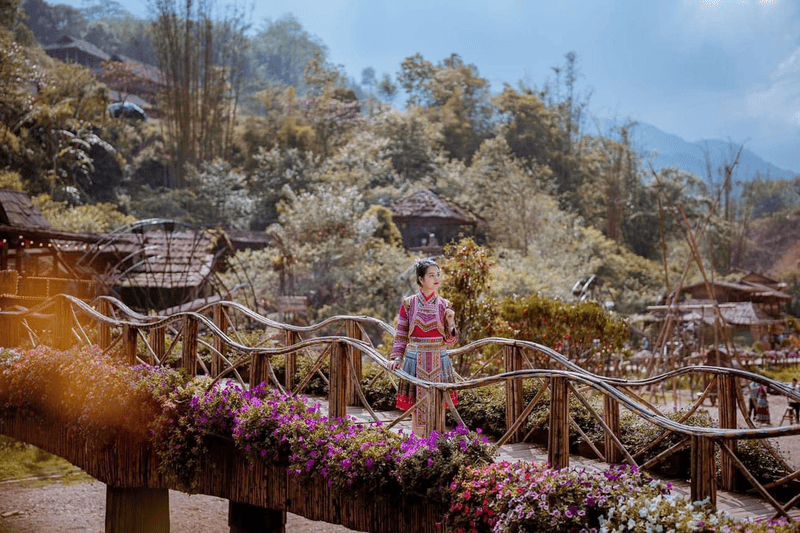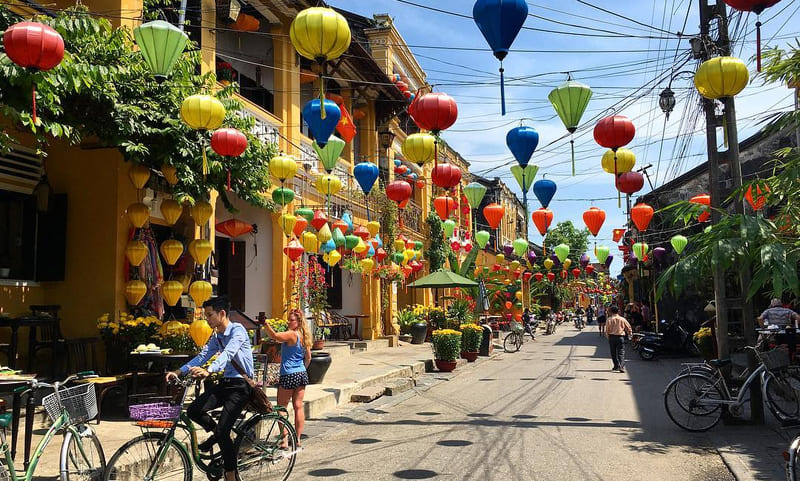Bà Nà Hills: A Memorable Journey
Ba na mountain resort is located just 25 kilometers from Danang in central Vietnam. It sits at an altitude of 1,400 meters in the Truong Son mountain range, part of the larger Annamite range. Originally established by the French during the colonial era as a hill station, Ba na has since transformed into one of Vietnam’s largest amusement parks, a Vietnamese-style Disneyland. Whether visiting with family, friends, or as a couple, a trip to Ba na hills offers a full day of entertainment in a unique setting, complete with surprises, breathtaking views, and a pleasant, temperate climate.
What to see and do in Ba na hills?
To reach Ba na hills, visitors must take a cable car, an experience in itself, as it holds the record for the world’s longest non-stop cable car ride. Spanning over 5 kilometers, the journey offers breathtaking views of lush mountains, cascading waterfalls, and meandering streams.

1. The golden bridge (Cầu Vàng)
The golden bridge is one of Ba na hills’ most iconic attractions. This pedestrian bridge, inaugurated in June 2018, stretches 150 meters and is held up by two giant hands, often referred to as the “hands of the gods.” The architectural marvel creates a mesmerizing effect, giving visitors the sensation of walking on a golden thread high above the mountains. On a clear day, the bridge offers spectacular views of the forested hills and Danang’s coastline.
The Guardian ranked the golden bridge among the world’s most impressive pedestrian bridges.
2. The French village
Ba na hills features a meticulously recreated medieval French village, inspired by the architecture of Carcassonne. The village includes a castle, a cathedral, and charming cobblestone streets. Visitors can dine at four French-themed restaurants, La Lavande, Brasserie, Le Jardin, and La Crique, serving French cuisine, complete with imported wines and cheeses.
One of the highlights within the village is Debay wine cellar, a 100-meter-long underground wine cellar built by the French in 1923. The cellar maintains a constant temperature of 16–20°C, preserving its historic charm.

3. The love garden (Vườn Tình Yêu)
This stunning floral attraction consists of nine uniquely themed gardens, each telling a different story through its carefully curated landscaping.
4. Fantasy park
Fantasy park is perfect for families seeking adventure and fun. Inspired by Jules Verne’s novels Journey to the Center of the Earth and Twenty Thousand Leagues Under the Sea, this 20,000-square-meter amusement complex spans three floors, featuring a wide array of games, rides, and thrilling attractions.
3D, 4D, 5D cinemas and Vietnam’s only 360-degree mega theater
Roller coasters and free-fall tower (Vietnam’s highest at 29 meters)
Virtual reality experiences

5. The wax museum
Ba na hills is home to Vietnam’s first wax museum, showcasing life-like wax figures of international celebrities, sports legends, political figures, and movie stars. These sculptures are crafted by skilled Italian artisans.
Visitors can also enjoy a variety of dining options within Fantasy park, offering both Asian and Western cuisines.

Practical information
- Entrance fee: 700,000 VND (≈30 USD), which includes access to the cable car, train ride, wine cellar, French village, and most Fantasy park attractions.
- Recommended visit duration: A full day (5–6 hours minimum) to fully experience the attractions.
- Accommodation: While most visitors opt for a day trip, a few hotels within Ba na hills offer overnight stays for those who wish to experience the mountain’s beauty at sunrise and sunset.
Best Time to Visit
The best time to visit Bà Nà Hills is during the dry season, from November to March. During this time, the weather is cool and dry, with temperatures ranging from 15 to 25 degrees Celsius. These are ideal conditions for outdoor activities such as hiking, camping, and exploring the gardens and temples.

Conversely, the rainy season lasts from April to October and can be quite wet, with frequent rains and occasional storms. While the landscape is lush and green during this time, outdoor activities can be more challenging and less enjoyable.
It’s important to note that the weather at Bà Nà Hills can change suddenly, with unexpected fluctuations in temperature and rainfall. Visitors should be prepared with appropriate clothing and gear for all weather conditions.
Ba na hills 100 years ago
During the French colonial period, authorities established several hill stations across Vietnam and Indochina to provide a cooler climate for soldiers and settlers unaccustomed to the region’s hot and humid weather, particularly during the summer months. In 1919, Ba na was founded with the opening of a sanatorium. Over time, numerous chalets and villas were built along the rolling ridges of the mountain. Visitors especially enjoyed the stunning panoramic views, which, on clear days, extended to the bay of Danang, then known as Tourane. At its peak, Ba na housed around 200 villas, hotels, and even a church.
After the French defeat at Dien Bien Phu and their departure from Vietnam, Ba na was abandoned, and its once-grand villas fell into ruin. It wasn’t until nearly 30 years later that a Vietnamese investment group revitalized Ba na, turning it into a whimsical, extravagant attraction, one that is now famous for its unique blend of fantasy and kitsch charm.

Thanh Nam Nguyen
Born in Ho Chi Minh City with Vietnamese-American roots, Thanh Nam Nguyen is passionate about adventures and traveling in Indochina. As a local guide for All Vietnam Senses, he leads tours in southern Vietnam, Cambodia, and Thailand, sharing his knowledge with travelers and inspiring readers to explore the region. Leave a comment below for him to respond directly!








